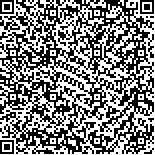贾功伟,李娜,殷樱,黄荣忠,虞乐华,贾朗.神经肌肉电刺激在慢性阻塞性肺疾病康复中的应用[J].中华物理医学与康复杂志,2017,39(1):21-24
扫码阅读全文

|
| 神经肌肉电刺激在慢性阻塞性肺疾病康复中的应用 |
|
| |
| DOI: |
| 中文关键词: 慢性阻塞性肺疾病 肌力训练 耐力训练 神经肌肉电刺激 |
| 英文关键词: Chronic obstructive pulmonary disease Endurance training Strength training Neuromuscular electrical stimulation |
| 基金项目:重庆市卫计委医学科研计划项目(20142027,2013-2-040) |
|
| 摘要点击次数: 3729 |
| 全文下载次数: 6169 |
| 中文摘要: |
| 目的探讨神经肌肉电刺激在慢性阻塞性肺疾病(COPD)患者肺康复中的作用。 方法选择符合入选标准的COPD患者78例,至研究结束共脱落患者10例,最终纳入研究患者共68例,按照随机数字表法将其分为神经肌肉电刺激组(36例)和运动治疗组(32例),2组均接受常规药物治疗和基础康复训练,在此基础上分别进行双下肢神经肌肉电刺激和双下肢肌力、耐力训练8周。治疗前及治疗8周后(治疗后)分别对2组患者的肺功能、多因素分级、股四头肌等速肌力、运动心肺功能、圣乔治呼吸问卷(SGRQ)进行评估。 结果治疗前,2组患者肺功能指标、多因素分级系统评定、股四头肌峰力矩、心肺功能、SGRQ比较,差异均无统计学意义(P>0.05)。与组内治疗前比较,2组患者第1秒用力呼气容积(FEV1)、FEV1占用力肺活量比例(FEV1/FVC)均有所改善(P<0.05)。神经肌肉电刺激组除体重指数(BMI)外,FEV1占预计值百分比、MRC、6MWD均较组内治疗前改善,运动治疗组BMI、FEV1占预计值百分比、6min步行距离测试(6MWD)较组内治疗前改善(P<0.05)。神经肌肉电刺激组治疗后BMI、6MWD与运动治疗组比较,差异有统计学意义(P<0.05)。2组患者治疗后股四头肌峰力矩均较组内治疗前增加,且运动治疗组峰力矩[(83.07±1.83)Nm]大于神经肌肉电刺激组[(78.88±2.06)Nm](P<0.05)。神经肌肉电刺激组治疗后VO2max、Wmax较组内治疗前增加(P<0.05),运动治疗组治疗后VO2max、Wmax、力竭时间较组内治疗前增加(P<0.05)。神经肌肉电刺激组除疾病影响因素外,总分、症状、活动能力评分较组内治疗前显著降低(P<0.05),运动治疗组总分、症状、活动能力、疾病影响因素均较组内治疗前显著降低,差异有统计学意义(P<0.05)。 结论神经肌肉电刺激和下肢运动训练均可作为COPD患者肺康复的基础,但下肢运动训练仍是COPD患者肺康复的首选康复方案。 |
| 英文摘要: |
| Objective To explore the efficacy of neuromuscular electrical stimulation (NMES) in treating severe and chronic obstructive pulmonary disease (COPD). MethodsSeventy-eight COPD patients were randomly divided into an NMES group of 38 and an exercise therapy group of 32. In addition to the routine drug therapy and basic rehabilitation training, the NMES group received 8 weeks of NMES of the lower limbs while the exercise group was provided with strength and endurance training of the lower limbs, also for 8 weeks. Before and after the 8 weeks of treatment, pulmonary function was tested along with isokinetic quadriceps strength, cardiopulmonary capacity, and lung capacity using Saint George′s respiratory questionnaire (SGRQ). ResultsThe two groups showed no significant difference in any of the measurements before the treatment. After the treatment, forced expiratory volume in 1 second of (FEV1), FEV1/forced vital capacity (FVC), FEV1 in percentage of the predicted value, medical research council dyspnea scale (MRC) score and the 6-minute walk distance (6MWD) improved in both groups. However, the average body mass index and 6 minute walk distance differed significantly between the groups after the treatment. The quadriceps′ peak torque increased after the treatment in both groups, but the average in the exercise group was significantly higher than that in the NMES group. VO2max and Wmax also increased significantly in both groups, and the average time to exhaustion increased significantly in the exercise group. Significant improvement was observed in the BODE assessment after the intervention for both groups. ConclusionNeuromuscular electrical stimulation is as effective as therapeutic exercise in promoting the rehabilitation of severe COPD patients. However, lower limbs exercise is still the first choice in managing such patients. |
|
查看全文
查看/发表评论 下载PDF阅读器 |
| 关闭 |
|
|
|